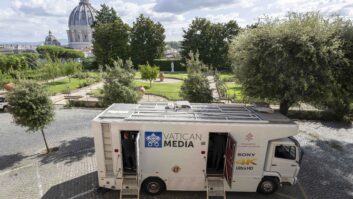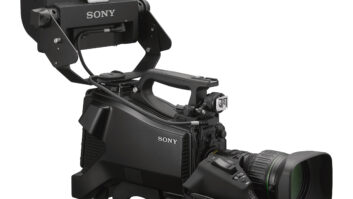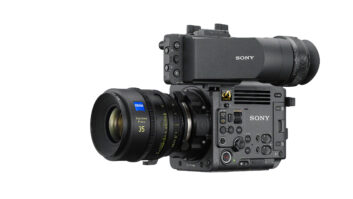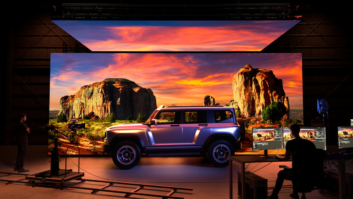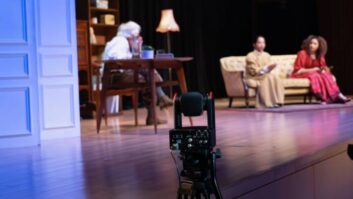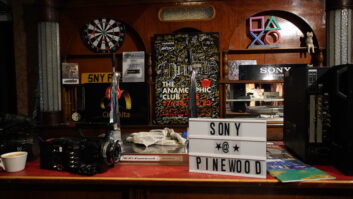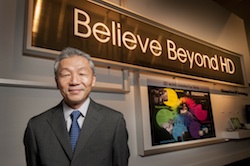
Sony’s new European chief tells TVBEurope that it must help some broadcasters explore new 4K territories, while driving efficiency for other broadcasters still transitioning to HD.
“We must push the boundaries of the possible at the same time as delivering efficiencies,” declares Katsunori Yamanouchi, the newly appointed VP of Sony’s Professional Solutions Europe (PSE) business. “That is the critical balance for us.”
With a breadth and depth of product that touches on virtually every aspect of a broadcaster’s business and technical infrastructure, Sony is challenged to lead from the front as well as cater to the everyday practicalities of clients transitioning to tape-free and HD production. It’s a difficult act to juggle, made even harder by the imperative among organisations to cut costs.
“The availability of smart devices and IP distribution has made all broadcast operations more complex,” he says. “No longer is video delivered to the TV screen, but to multiple screens. Consequently, all broadcasters need to diversify distribution and at the same reduce their operating cost. As a manufacturer we have always tried to push the bar in picture quality which we realise may increase the cost of investment and, at the same time, balance that with solutions that deliver savings.”
Europe is a microcosm of this challenge. “While some markets are mature and are beginning to explore 4K, others still need to convert from SD to HD. For Sony the critical issue is to accommodate the diversity.”
Japanese-born Yamanouchi has been with Sony’s Professional Solutions Group since 1989, gaining European experience leading the company’s business in the CIS, MEA and German-speaking territories between 2003-09. Latterly he headed up Planning and Marketing within Sony’s Content Creation Solutions Division in Japan.
“I am proud to say that the broadcasting business is in my blood,” he says. “This is a period of an ever increasing pace of change in which neither technology nor customers are standing still.
“The TV of tomorrow is almost unrecognisable from the TV of the last century. Next-generation TV means much more than just picture quality. It means IP-connected and enabling the consumer to access a huge range of online content and services as well as stunning 4K resolution and 3D viewing – this is a long way from what we had in mind when HD was first introduced a decade ago.
“In this emerging 4K world, I believe Sony has been the driving force. We launched the world’s first 4K cinema projection system and followed that with a world first 4K home projector. Over 30 major films have been shot or are in production with the F65 and we are now bringing 4K to the home.”
4K experiments and 3DTV uncertainty
At IBC, Sony and satellite operator SES demonstrated live 4K transmission from SES’ Luxembourg base, via Astra satellite, to the RAI and onto an 84-inch Bravia.
We are leading the next stage beyond HD which is realtime satellite delivery direct to home,” he says. “4K is already proven in the cinema and in high end drama so we now need to address the production of 4K for sport and other genres which almost no-one has experience of yet. We are in the experimental stage of 4K and collaborating with customers and partners like SES to further develop 4K.”
One way of introducing 4K into the field is by shooting 4K and down-converting to 2K or extracting 2K elements of the 4K picture. Sony demonstrated just this at IBC, pairing two F65s at a soccer match for an operator to remotely navigate inside the 4K stitched picture, zoom-in or take a cut at 1080 or 720 resolution.
“It’s a new opportunity to capture productions without extraneous crew or equipment by using one set of cameras to create a dynamic set of HD pictures,” explains Yamanouchi.
That’s the top-end, but for everyday production workflows he is equally keen to highlight a suite of innovations including the Media Backbone for networked production, a new optical disc archive system ready in 2013 and an IP networking unit for live production.
“The ability to send live video signals through an IP network for broadcast application ushers in a new era of multi-camera production,” he says of the NXL-IP55 launching in January.
The NXL-IP55 can transfer up to four HD-SDI signals, 10 audio channels and control/Tally/GPIO/genlock signals over a single network cable removing the complexity and cost of coaxial cabling on location in a single stroke. Operational distance is likely to improve as the tech advances. In tests to date broadcast quality has been achieved with half-frame latency over distances of 500km over a single optical fibre.
“The efficiencies make it possible to cover not just high ticket events but also more second tier events at lower cost and high production value,” he observes. “The picture quality and latency were an issue in this type of product before but we have overcome these points.”
Noticeably toned down from its marketing of two years ago is development in 3D but Yamanouchi denies the format is on the wane. “While our message from a product point of view is a bit quieter the activity itself is steady and growing,” he says. “Sony is working with key partners like Sky, ESPN and the BBC to produce major 3D events like the UEFA Champions League Final and Wimbledon. Maybe the message is scaled down but the activity is still continuing and the equipment is proven and ready to go.”
Sony is the new official partner to Host Broadcast Services’ production of the 2014 FIFA World Cup in Brazil, usurping Grass Valley. The core equipment requirements across the 12 venues include 340 Sony HDC cameras (including 72 super-slo-mos), 48 vision mixers, 816 monitors, and 280 staff. The technical setup will be similar to the 2010 World Cup in South Africa with facilities located in broadcast units rather than traditional OB vehicles.
However, FIFA has yet to decide to mount a 3D operation, let alone to what degree. In 2010 the decision to produce 25 matches live in 3D was made largely thanks to Sony’s financial backing, rumoured to be around €14 million as it looked to promote sales of its 3DTVs. Perhaps by 2014 the sale of 4K displays will be higher on the company’s agenda.
Yamanouchi’s predecessor, Naomi Climer (now at Sony Pictures in LA), left the division — which also spans AV media — a profitable one. Though only a month or so into his duties, does he feel any pressure to continue her legacy?
“The Eurozone is facing a tough economic situation and we have a big challenge to meet customer needs,” he says. “I have begun talking with customers and dealers and I will learn more as we take our discussion on a road show to southern Europe. Only then can I assess the true situation for each market.”
By Adrian Pennington
